Difference between Endotoxin and Exotoxin
Last reviewed by Editorial Team on February 27th, 2019.
Toxigenesis is the process of producing toxins by the pathogenic bacteria. It gives birth to diseases and medical disorders.
The toxins produced by toxigenesis are the ones responsible for various types of diseases.
Toxins are micro molecules but can also be peptides or proteins produced by cells and they have the ability to cause diseases and/or structural damage once they are in contact with the tissues.
Toxins are classified into two. They can be endotoxins or exotoxins. To know more about these two classifications, keep on reading below. (1, 2)
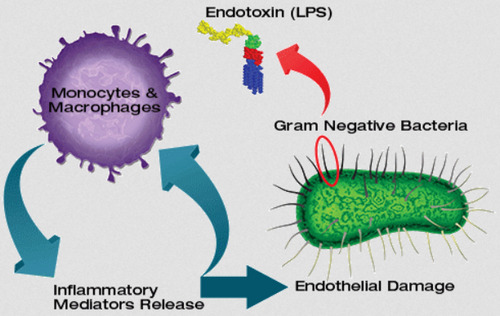
Image 1: Endotoxins are secreted by gram-negative bacteria only.
Picture Source: i2.wp.com/www.clinicallabtests.com
What are endotoxins?
They are lipopolysaccharides toxins that came from the cell wall of gram-negative bacteria such as E. coli, Shigella, Salmonella, and H. influenza.
They are called endotoxins because they are cell-bound and are only released during cell lyses. They are not active on their substrate and are heat stable. However, they have poor antigenicity.
Big molecules cannot penetrate the outer wall of bacteria, which is responsible for the bacteria’s safeguarding activity. (1, 2, 3)
What are exotoxins?
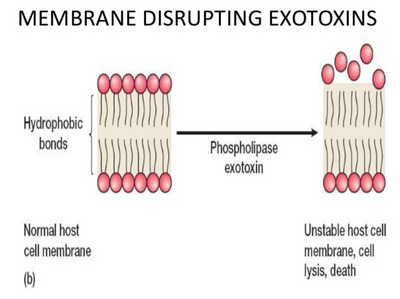
Picture 2: The membrane destructing exotoxins.
Photo Source: image.slidesharecdn.com
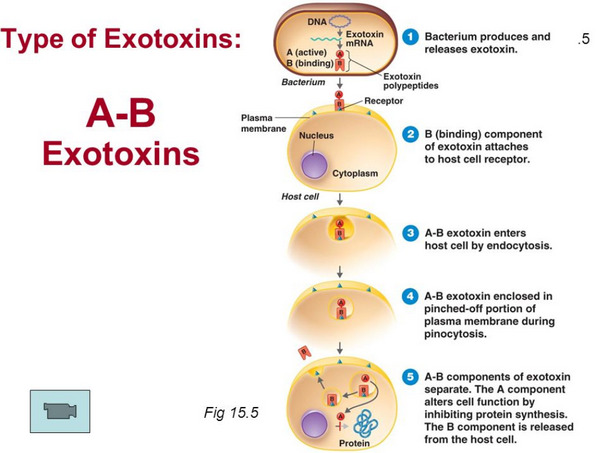
Photo 3: Type A and type B exotoxins.
Image Source: slideplayer.com
They are substances secreted by some types of bacteria. They are poisonous, especially in their purest form.
They are secreted by the gram-positive bacteria. They are usually proteins and polypeptides. Once formed will stimulate a variety of host responses. They are released extra-cellularly.
They are highly contagious and can spread from the infection site to other parts of the body. The damage is massive when not treated right away. They cause damage by destructing the cells and altering the normal cell metabolism.
Although exotoxins are mostly produced by gram-positive bacteria, some gram-negative bacteria may cause exotoxins too.
Endotoxins and exotoxins are very much alike in the sense that they both cause damage to the cells and to the host as a whole. However, they differ in many ways. In this article, we are going to discuss in details the differences between endotoxins and exotoxins.
Refer to the table below for a detailed comparison between endotoxin and exotoxin. (2, 3, 4)
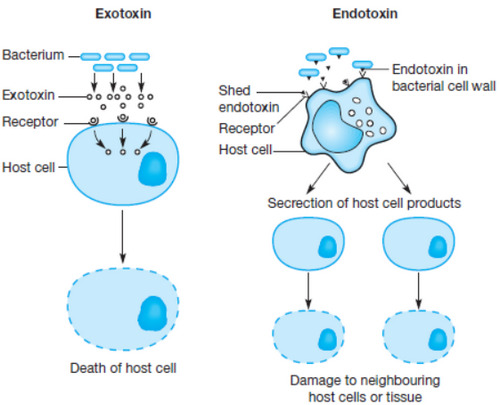
Image 4: A comparison image between exotoxin and endotoxin.
Picture Source: 3.bp.blogspot.com

Picture 5: A cartographic presentation of endotoxins and exotoxins.
Photo Source: 3.bp.blogspot.com
| Point of comparison | Exotoxins | Endotoxins |
| Definition | They are proteins produced inside the bacteria and are a part of the bacteria’s growth and metabolism. | They are the lipid parts of lipopolysaccharides found in the outer membrane of bacteria. |
| Location | They are synthesized in the cytoplasm. | They are found in the outer membrane of the cell wall of gram-negative bacteria. |
| Produced by | They are usually produced by gram-positive bacteria but can also be found in gram-negative bacteria. | They are produced by gram-negative bacteria only. (5, 6) |
| Chemical nature | Protein complexes | Lipopolysaccharide protein complexes |
| Molecular weight | 10KDa | 50 to 1000KDa |
| Composition | It has two subunits namely A and B. The A subunit is the one responsible for catalytic activity. The B subunit is used to bind with the appropriate cell receptor. | Endotoxins have three basic components: lipid A, O-antigen, and core oligosaccharide. (5, 7) |
| Location of chromosomes | Extrachromosomal genes such as in the plasmids | Chromosomal genes |
| Types of enzymes present | Collagenase Hyaluronidase Nuclease Protease Neuraminidase Phospholipase A |
Immunoglobulin A Immunoglobulin G Catalase Fibrolysin (8) |
| Secretion and secreted by | It secrets out of the cell and secreted by the organisms. | It is not released outside the cell until the cell dies. It is secreted by an integral part of the cell wall. |
| Cell lysis | It does not require cell lysis. | A cell lysis is necessary. |
| Ability to filter | Can be filtered | Cannot be filtered |
| Heat stability | It is labile to heat | It is heat stable |
| Denaturation | Can be denatured on boiling | Cannot be denatured on boiling |
| Enzymatic activity | Most activities include enzymes | The involvement of enzymes is limited and sometimes absent. |
| Immunogenicity | High | Weak |
| Toxicity | Highly toxic/fatal (3, 8) | Moderately toxic |
| Fever induction | No | Yes |
| Specificity | Specific in terms of mechanism and actions. It is also specific to certain bacterial strain. | Not really specific in nature including the bacterial strain. |
| Receptors | It binds to a specific receptor. | Specific receptors are not found. |
| Potency | It is highly potent. A single toxin molecule can affect a large number of host cells. | Less potent. To cause a disease, a large amount of toxin is needed. |
| Neutralization by antibodies | It can be neutralized. | It cannot be neutralized. |
| Can be converted to toxoids | It can be converted to toxoids such as in the prevention of various types of diseases like tetanus, botulism, and diphtheria. (9, 10) | It cannot be converted to toxoids. (9) |
| Detection | It can be detected using various procedures such as precipitation and neutralization. | It can be detected using limulus lysate assay. |
| Vaccines availability | Vaccines are readily available. | No vaccines are available. |
| Examples of diseases | Tetanus Botulism Diphtheria |
Meningococcemia
Sepsis (gram-negative rods) |
| Examples | Staphylococcus aureus Streptococcus pyogenes Bacillus cereus Bacillus anthracis |
E. coli Shigella Salmonella typhi Vibrio cholera (1, 5) |
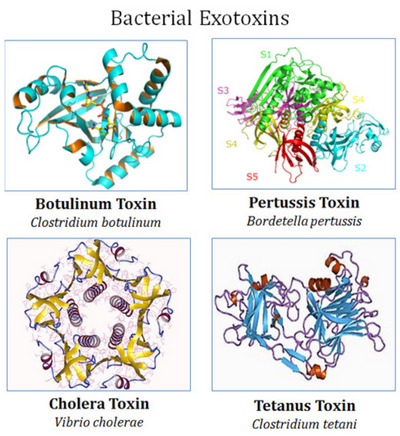
Photo 6: Examples of bacterial exotoxins.
Image Source: www.easybiologyclass.com
The importance of toxins in the formation of toxoids?
Some types of toxins are used to create toxoids. A bacterial toxin is weakened until it is no longer toxic and cannot cause harm to other living organisms.
Although it can no longer cause diseases still it is strong to induce the formation of antibodies and make a living organism immune to certain types of disease. The bacteria are taken, modified, and put into a vaccine. An antibody is made and a living organism will eventually build immunity.
Endotoxins and exotoxins are two types of toxins produced by bacteria. They play an important role in toxigenesis. Classifying them is a must as it helps in the creation of toxoid and in determining the right course of treatment.
Endotoxins and exotoxins do have similarities and a whole lot of differences and each has an important role to play in microbiology. (3, 8, 9, 10)
References:
- http://medimoon.com/2013/04/difference-between-endotoxin-and-exotoxin/
- https://microbiologyinfo.com/differences-between-exotoxins-and-endotoxins/
- https://www.sciencedirect.com/science/article/pii/S0041010117303136
- http://www.differencebetween.net/science/difference-between-endotoxins-and-exotoxins/
- https://biologywise.com/endotoxins-vs-exotoxins
- https://en.wikipedia.org/wiki/Exotoxin
- https://microbenotes.com/differences-between-exotoxins-and-endotoxins/
- https://www.easybiologyclass.com/difference-between-bacterial-endotoxin-and-exotoxin-comparison-table/
- https://quizlet.com/19233963/micro-exotoxin-vs-endotoxin-flash-cards/
- http://www.onlinebiologynotes.com/difference-exotoxin-endotoxin/
Similar Posts:
- What is Gram Stain Test – Staining Procedure, Principle and Results
- Difference between T Cells and B Cells
- Methyl Red Test
- Types of Blood Cells
- Difference between DNA and RNA
